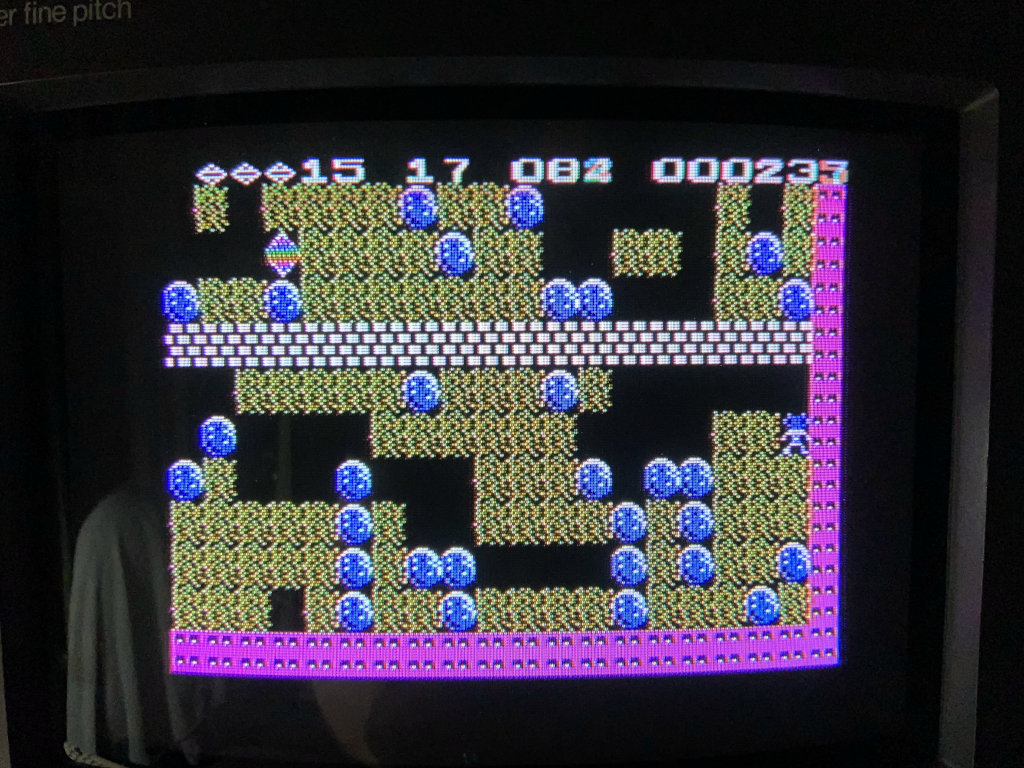Apple IIc
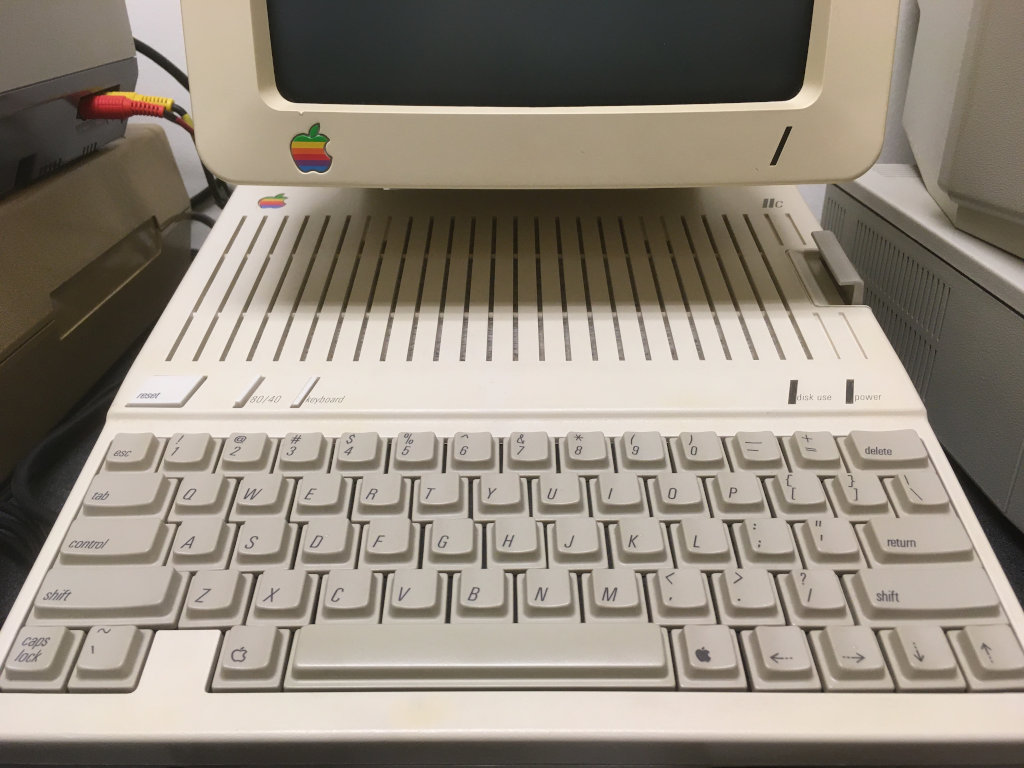
Computers in Collection
Other computers I’ve repaired:
- Apple IIc, model A2S4000, serial D450GPK, at Ctrl-H Hackerspace
General Info
Power
Original power adapters I’ve used recently seem to induce a ground ripple in the composite video output. You’ll see a slow distortion sweep across the screen over several seconds. This distortion “sweep” isn’t seen when using an alternative power source. I swear I’ve also had a system’s floppy drive operate erratically when on an original power adapter, but I didn’t do enough testing to prove that decisively.
Power is provided to the computer via an 7-pin DIN connector. I have used the CUI SD-70J, which has an extra, eighth unpopulated hole. The computer side is male, the power adapter side is female. The adapter output is 15V at 1.2A 25W. The CUI SWI25-15-N-P5 should do nicely.
Keyboard
The 80/40 and keyboard switches were sticking on the first system I repaired. I seem to recall that these key caps could go on two ways, one way rotated 180 degrees from the other. And that the keys fit better one way than the other.
RAM
Micron RAM is notorious for failing. Sometimes it appears with an “MT” logo, and sometimes it’s Apple-branded.
When using the RAM diagnostics built into the system ROM, beware that a failure preceded by an asterisk denotes a defect in the auxiliary RAM bank, not the primary RAM bank. So a machine with a defect in the auxiliary RAM will run most software just fine – unless it requires the additional 64K present in the Apple IIc. Also, be sure when you’re replacing RAM based on the diagnostics that you replace RAM in the correct bank! Before I realized the asterisk indicated auxiliary RAM, I unnecessarily replaced a primary RAM chip.
Another thing to watch out about with the RAM diagnostics is that it only detects one error bit at a time. So if you have several bad bits, expect to spend a lot of time alternating between the diagnostics and the soldering iron, as you serially replace each RAM chip as the diagnostics discovers it. Ideally, it would detect all the bad bits and tell you about them all at once, so you can replace them in a single pass. But it doesn’t, so be patient.
Mechanical
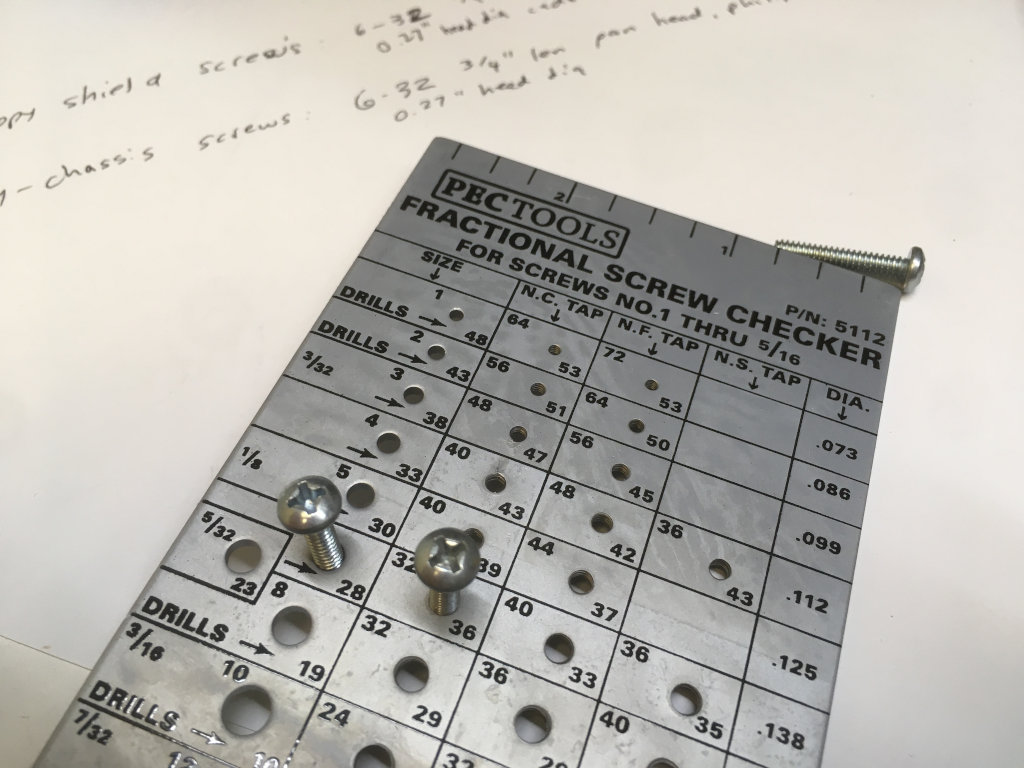
| Part | Description | Replacement |
|---|---|---|
| Rubber feet | off-white (beige), 11 mm (7/16”) diameter, 3 mm proud of case surface, 5 mm (13/64”) height, adhesive-backed, dome shape, rubber | McMaster-Carr 95495K12 |
| Drive-case mounting screws | 6-32 thread, steel, 3/4” length, rounded Phillips, 0.27” diameter pan head, 0.097” head height, zinc plated | McMaster-Carr 90272A151 |
TODO: More data to be collected or entered here?
Apple IIc, serial D46015V
Inventory
Acquired from the Oneonta basement on 2018/Mar/10.
Case
| Attribute | Value |
|---|---|
| Manufacturer | Apple |
| Part | A2S4000 |
| Serial | D46015V |
| Source | 2018/Mar/10, Oneonta |
CRT Monitor
| Attribute | Value |
|---|---|
| Name | Apple Monitor |
| Manufacturer | Apple |
| Order No. | A2M4090 (actual model number?) |
| Model | G090H (subcontractor model number?) |
| Serial | B021450 |
| Manufacture Date | May 1984 |
| Manufactured In | Japan |
| Picture Tube | TODO: |
| Notes | Adjustment pots are scratchy. |
| Source | 2019/Aug/17, craig@OMSI |
Stand:
| Attribute | Value |
|---|---|
| Manufacturer | Apple |
| Model | A2M4021 |
| Part | 825-0671-A |
| Serial | (none) |
| Manufactured In | USA |
| Source | 2019/Aug/17, craig@OMSI |
Logic Board
TODO: Logic board photo.
| Attribute | Value |
|---|---|
| Manufacturer | Apple |
| Part | TODO: |
| Serial | TODO: |
| Markings | TODO: |
| Char Gen | TODO: |
| IOU | TODO: |
| IWM | TODO: |
| KR3600-PRO | TODO: |
| MAP | TODO: |
| MMU | TODO: |
| MON | TODO: |
| Source | 2018/Mar/10, Oneonta |
Internal Floppy Drive
| Attribute | Value |
|---|---|
| Manufacturer | TODO: |
| Model | TODO: |
| Part | TODO: |
| Source | 2018/Mar/10, Oneonta |
Internal Power Supply
| Attribute | Value |
|---|---|
| Manufacturer | TODO: |
| Model | TODO: |
| Part | TODO: |
| Source | 2018/Mar/10, Oneonta |
Maintenance Log
Keyboard disassembled, keycaps cleaned/OxyCleaned, switch mechanisms greased.
Case disassembled and cleaned.
The machine did not come with a power brick. The Apple IIc wants approximately 15 Volts DC at 1.2 Amps. To test the system, I hot-wired a ham radio adjustable power supply to the internal leads of the power connector.
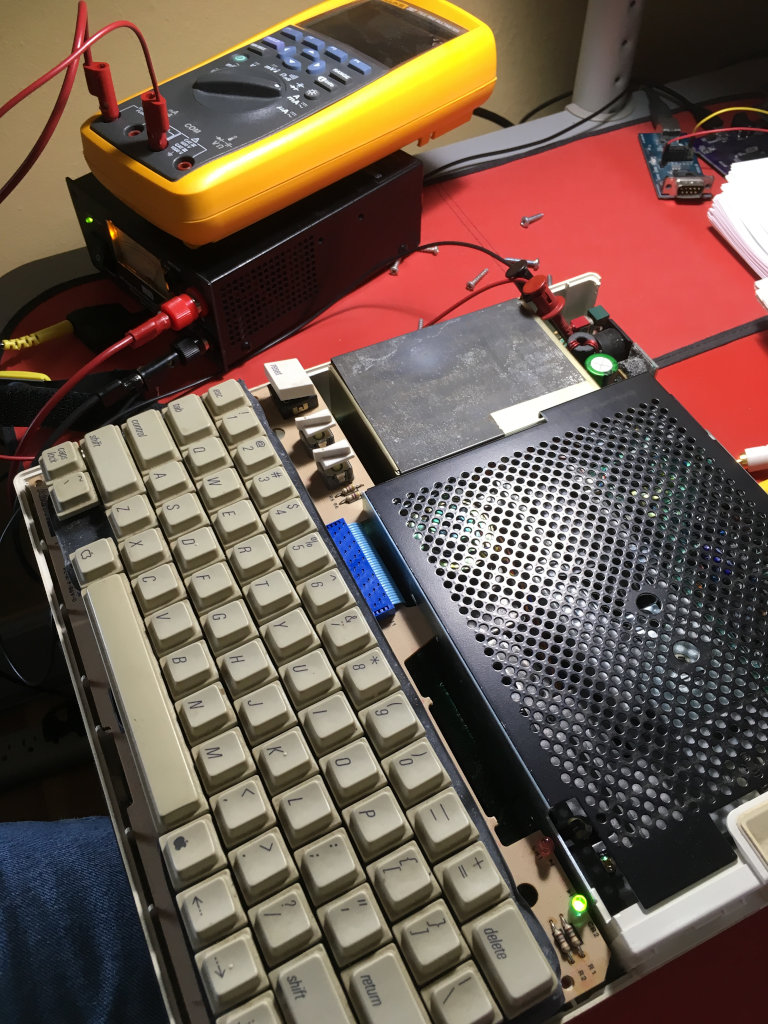
The computer worked! Kinda. There seems to be some problem with the floppy drive…
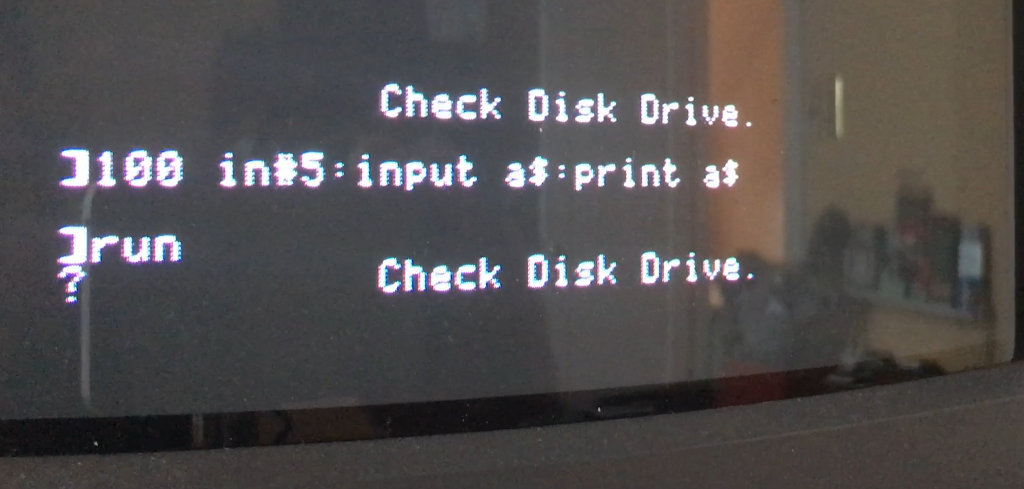
80/40 and keyboard switches no longer toggle?! They seem to be sticking.
TODO: A little light on detail here. How was the floppy problem addressed? I think I concluded the original Apple power supplies were leaking or otherwise upsetting the ground on the system, and once I switched to using my modern aftermarket arrangement, everything worked perfectly. Including the observed vertical sweep in the Apple IIc monitor, presumably from the vertical retrace frequency beating with the AC mains frequency. Also, get a photo of the aftermarket power supply arrangement.
Apple IIc, serial D470J57
Inventory
Acquired from Sean@CCC on 2020/Jan/03.
Case
| Attribute | Value |
|---|---|
| Manufacturer | Apple |
| Part | A2S4000 |
| Serial | D470J57 |
| Source | 2020/Jan/03, Sean@CCC |
CRT Monitor
| Attribute | Value |
|---|---|
| Name | Apple Monitor |
| Manufacturer | Apple |
| Order No. | A2M4090 (actual model number?) |
| Model | G090S (subcontractor model number?) |
| Serial | S028610 (stamped, hard to read) |
| Manufacture Date | “06 1984” (stamped, hard to read) |
| Manufactured In | Korea |
| Picture Tube | TODO: |
| Source | 2020/Oct/26, Sean@CCC |
Stand:
| Attribute | Value |
|---|---|
| Manufacturer | Apple |
| Model | A2M4021 |
| Part | 825-0671-A |
| Serial | (none) |
| Manufactured In | USA |
| Source | 2020/Oct/26, Sean@CCC |
Logic Board
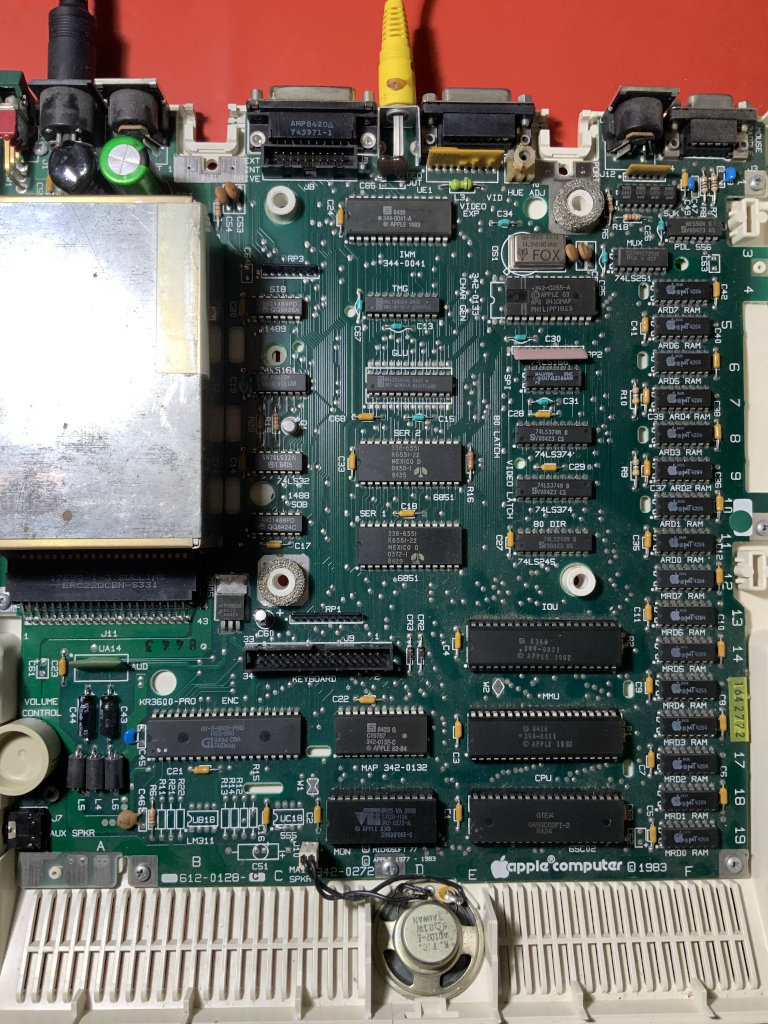
TODO: Better logic board photo.
| Attribute | Value |
|---|---|
| Manufacturer | Apple |
| Part | 612-0128-C |
| Serial | 1642772 |
| Markings | “612-0128-C”, “342-0272” “1642772” “8443” |
| Char Gen | 342-0265-A “8410MAP” |
| IOU | 344-0021 “8346” |
| IWM | 344-0041-A “8430” |
| KR3600-PRO | AY5-3600-PRO “PRO-050” “8434 CBA” |
| MAP | 342-0132-C “C19767” “8423” |
| MMU | 344-0011 “8416” |
| MON | 342-0272-A “8425 VA 3508” “23128-1136” |
| Source | 2020/Jan/03, Sean@CCC |
Internal Floppy Drive
| Attribute | Value |
|---|---|
| Manufacturer | TODO: |
| Model | TODO: |
| Part | TODO: |
| Source | 2020/Jan/03, Sean@CCC |
Internal Power Supply
| Attribute | Value |
|---|---|
| Manufacturer | TODO: |
| Model | TODO: |
| Part | TODO: |
| Source | 2020/Jan/03, Sean@CCC |
Maintenance Log
As received, the unit had garbage on the screen and didn’t do anything that resembled booting. Character generator and video was working correctly though, as the characters on screen was well-formed. Oddly, one character in the middle of the screen was changing rapidly.
DeOxit’ed all socketed ICs. No change in behavior.
Captured activity on all DRAM pins with a logic analyzer and attempted to identify bad RAM using Python to check behavior. Results were inconclusive.
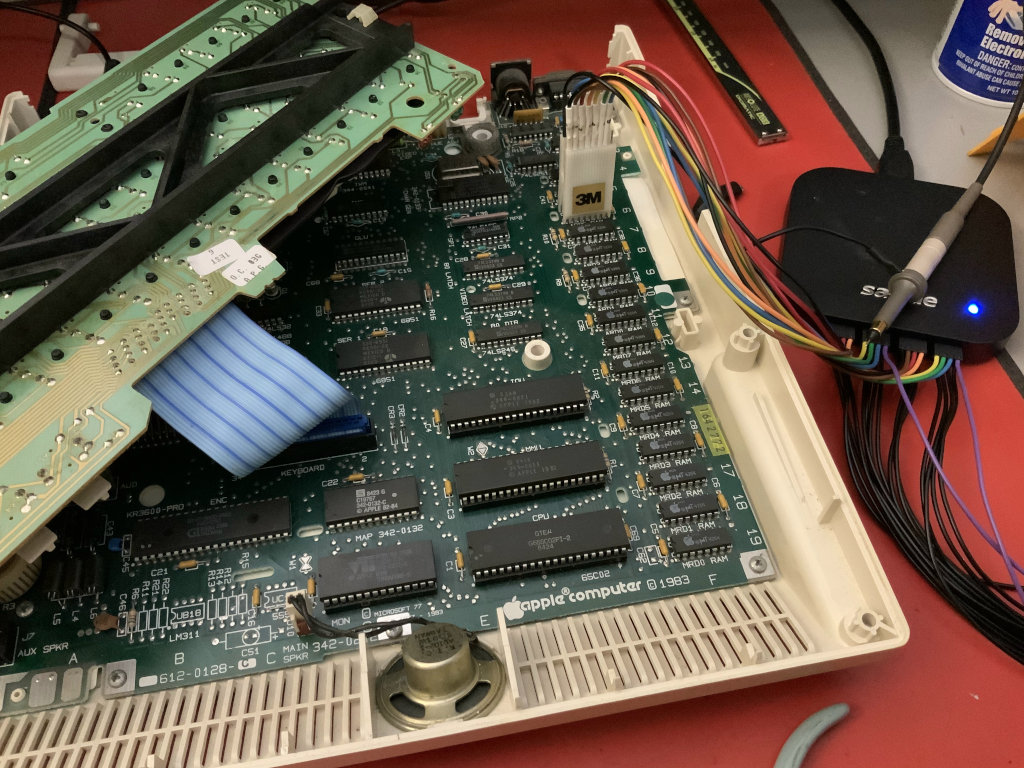
Did the piggyback technique using a Samsung KM4164B-15. Piggybacking MRD5 cured the random character in the middle of the screen. MRD7 exhibited changed behavior too. Both were replaced. As a result, the system would look like it was booting (“Apple //c” at the top of the screen) from a cold power-on.
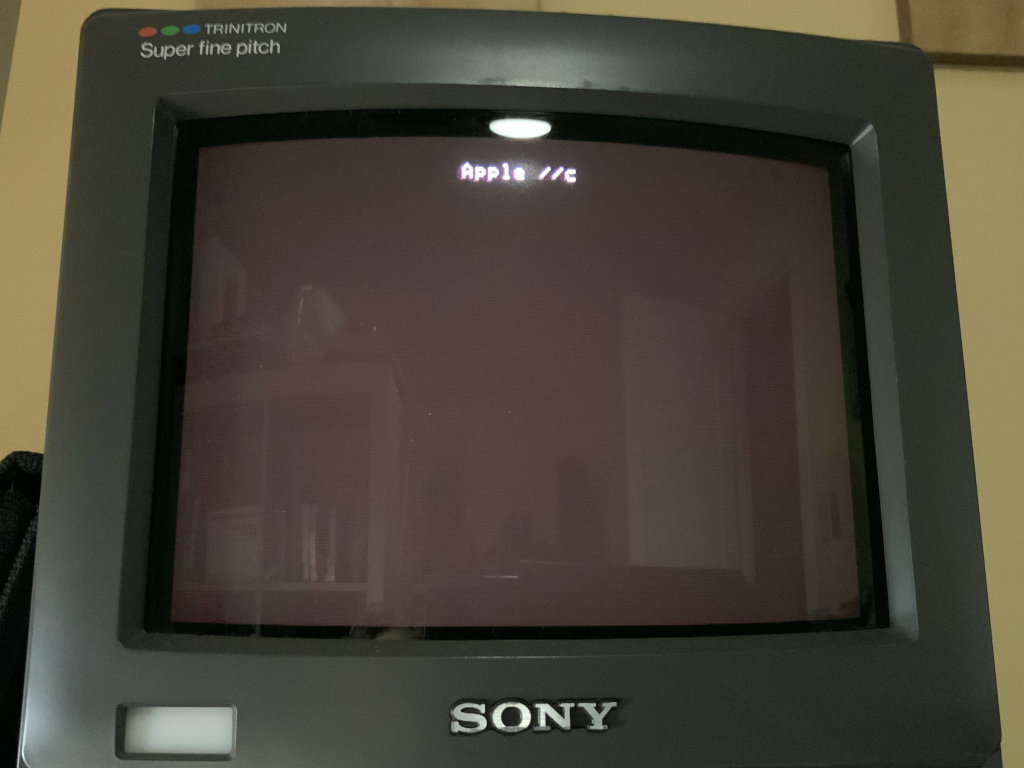
If reset or powered on too soon after power off, you’d get garbage on screen, or a repeating break into the monitor.
I dumped the ROM (made by Via Technology) and examined with hexdump. There were strings in the ROM, but every dozen or so bytes, a few bits were set. When comparing against an online dump of ROM 342-0272-A, there were lots of differences.
When visiting the local hackerspace, I availed myself of their Apple IIc and did a ROM swap. Lo and behold, the machine booted fine! Except that it wouldn’t read a test floppy. Swapping the floppy drive led to an apparently-functional machine.
I dug through the parts bin and located some AMD AM27C256-150DC. I burned one EPROM with the Apple IIc ROM 00, with the intention of duplicating a ROM 00 upgrade I saw in a video. I cut W1 and bridged W2 and installed the ROM 00 EPROM and the machine booted with no ill behavior! I ran the self-test (a feature of ROM 00 – Ctrl+Reset+OpenApple+ClosedApple) and it uncovered some more bad RAM: “*RAM ZP 0 0 0 0 0 0 1 0”. I take this to mean MDR1 is also bad. *sigh*
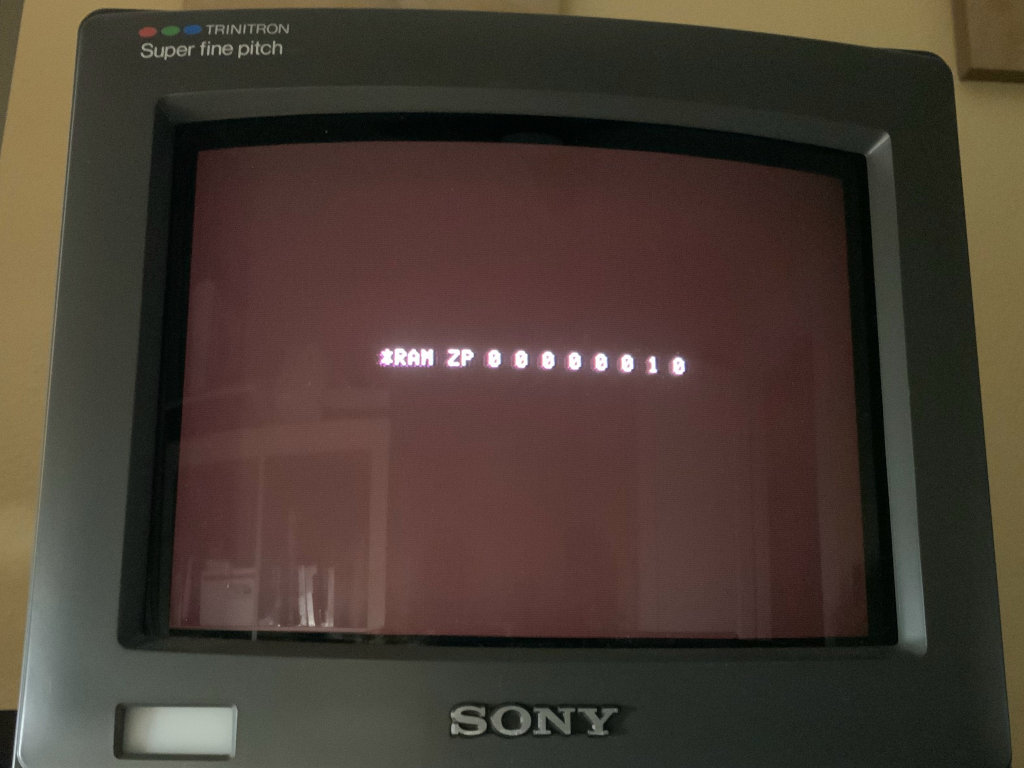
I used my hot-air setup to remove the memory chips I’d soldered in earlier, impatiently, and install sockets instead. MDR6 was pretty buggered from my previous Hakko desoldering tool tip being plugged without me realizing it. I’d destroyed some of the pads on the underside of the PCB. Fortunately, those pads weren’t functional, in that they had no traces on the bottom side.
I hadn’t thought out how to pull on an IC while using hot air. I would insert tweezers under the pins on one end of the IC or the other, and gently tug. That didn’t help the chip out of the board very well. Before I realized my pulling technique was poor, I tried upping the temperature on the hot air nozzle to 400C. Eventually, the chip came out, but later I noticed I’d warped the PCB. So I’ll stick to 300C or maybe just a little more in the future.
I replaced MDR1 and retested, and… The exact same failure. What the hell? It turns out, that asterisk before “RAM” indicates the auxiliary bank. So I replaced the wrong RAM chip. I needed to replace ADR1. OK, done. And… Self test now gives “*RAM 0 0 0 1 0 0 0 0”.
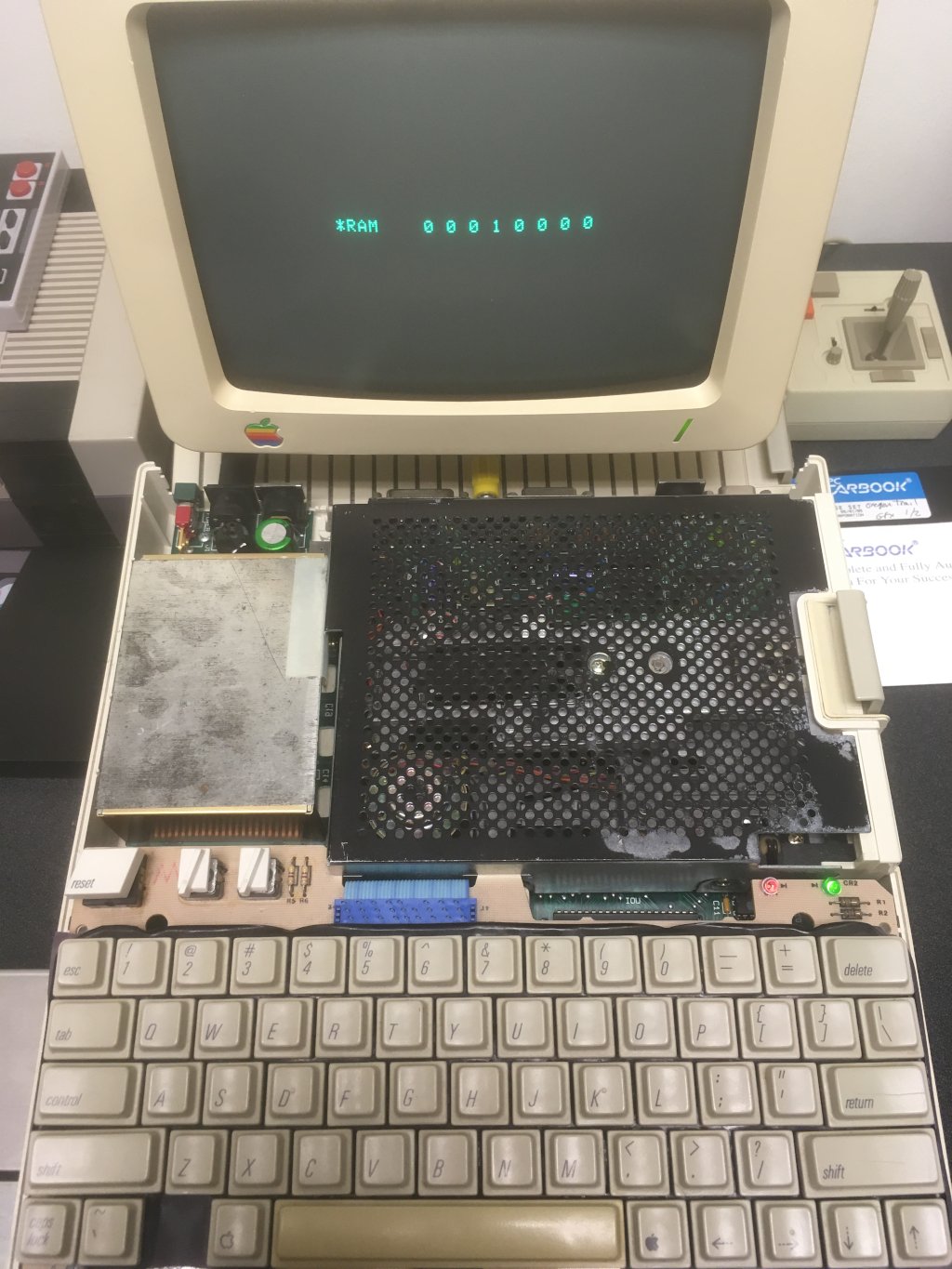
With my new wisdom, I know that’ll be ADR4. Replaced, and… “System OK”. Yay! And whew.
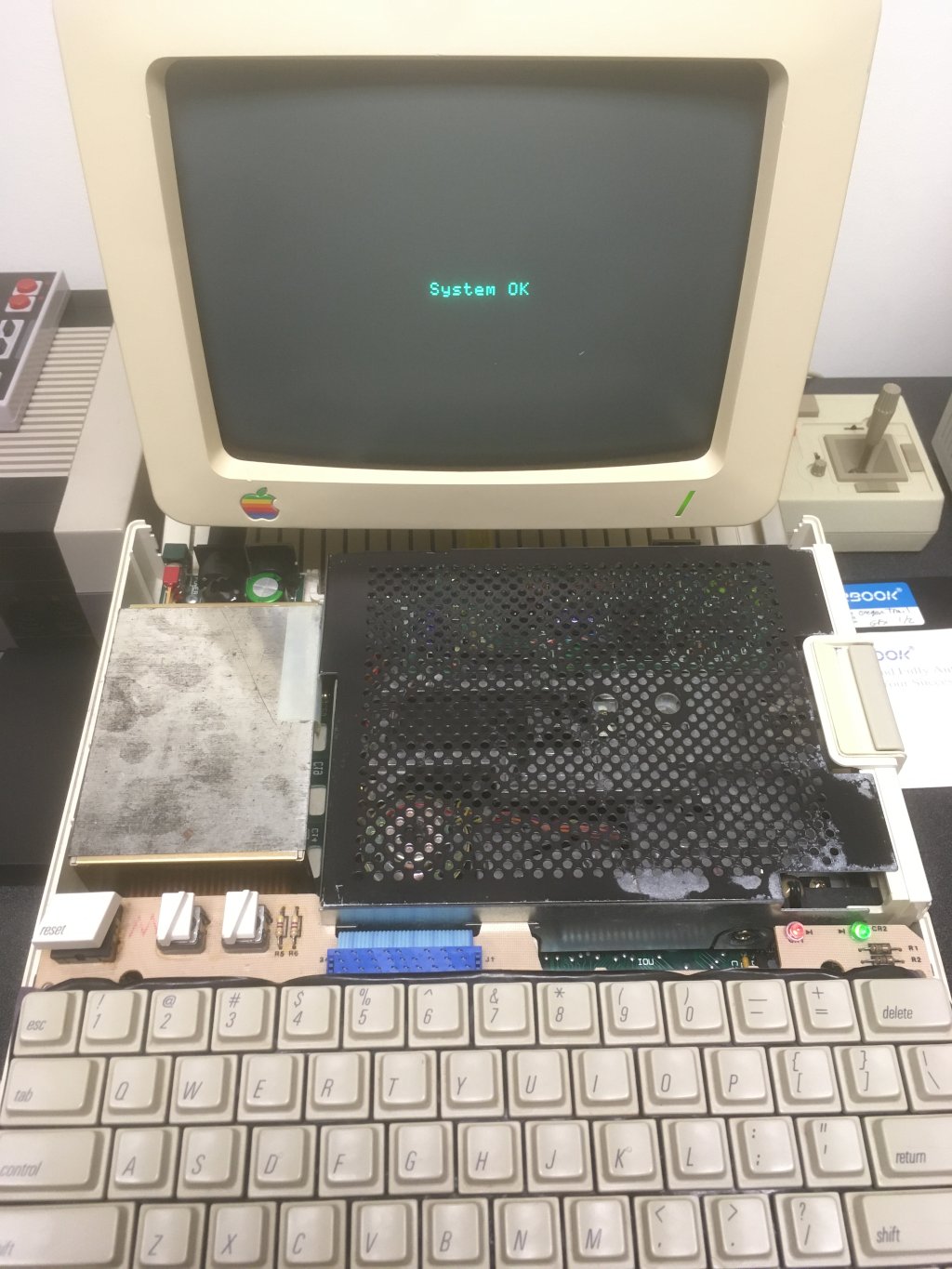
Now how about a game of Boulder Dash?
